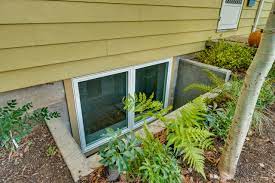Egress windows are designed to provide an emergency escape route from a basement or below-grade living space. While they serve a practical purpose, egress windows can also be an opportunity to create a beautiful and functional garden space. In this guide, we will provide a step-by-step guide to designing an egress window garden.
Step 1: Determine the Size of Your Egress Window
The first step in designing an egress window garden is to determine the size of your egress window. This will help you determine how much space you have to work with and what types of plants and features will fit in the space.
Step 2: Assess the Lighting Conditions
Next, assess the lighting conditions around your egress window. Consider how much sunlight the area receives and at what times of day. This will help you choose plants that will thrive in the lighting conditions.
Step 3: Choose Plants
Based on the size of your egress window and the lighting conditions, choose plants that will thrive in the space. Consider using a mix of perennials and annuals to create a variety of colors and textures. Some plants that are well-suited for egress window gardens include:
- Hostas
- Ferns
- Coral bells
- Bleeding hearts
- Impatiens
- Begonias
- Caladiums
- Coleus
- Vinca
Step 4: Create a Plan
Once you have chosen your plants, create a plan for your egress window garden. Use graph paper to sketch out the space and plan where you will place each plant. Consider the height and width of each plant and how they will fit together in the space. You may also want to include features such as a water feature or a seating area.
Step 5: Prepare the Space
Before you begin planting, prepare the space around your egress window. Remove any grass or weeds, and level the ground if necessary. You may also want to add soil or compost to improve the soil quality.
Step 6: Plant Your Garden
Once the space is prepared, it’s time to start planting your garden. Begin by planting taller plants in the back of the space and smaller plants in the front. Be sure to give each plant enough space to grow and spread out. Water each plant thoroughly after planting. Egress windows
Step 7: Add Features
To enhance your egress window garden, consider adding features such as a water feature, seating area, or decorative elements such as statues or garden art. These features can add interest and create a relaxing atmosphere.
Step 8: Maintain Your Garden
To keep your egress window garden looking beautiful, it’s important to maintain it regularly. Water your plants regularly, and fertilize them as needed. Trim back any plants that are getting too large, and remove any dead or damaged foliage. You may also want to add mulch around your plants to help retain moisture and prevent weeds.
Tips:
- Consider using a mix of perennials and annuals to create a variety of colors and textures.
- Choose plants that are well-suited for the lighting conditions around your egress window.
- Use graph paper to plan out your garden and ensure that each plant has enough space to grow.
- Consider adding features such as a water feature or seating area to enhance your egress window garden.
- Regularly maintain your garden by watering, fertilizing, trimming, and removing dead or damaged foliage.
In conclusion, designing an egress window garden is a fun and rewarding project that can create a beautiful and functional space. Begin by determining the size of your egress window and assessing the lighting conditions. Choose plants that will thrive in the space, and create a plan for your garden. Prepare the space, plant your garden, and add features to enhance the space.

